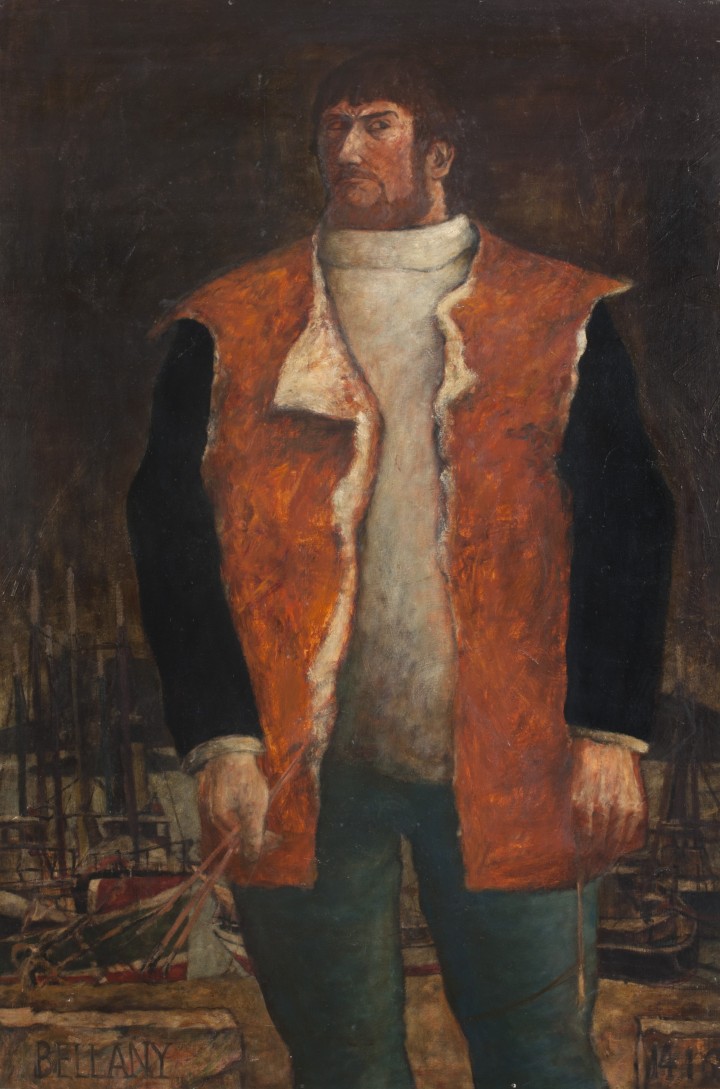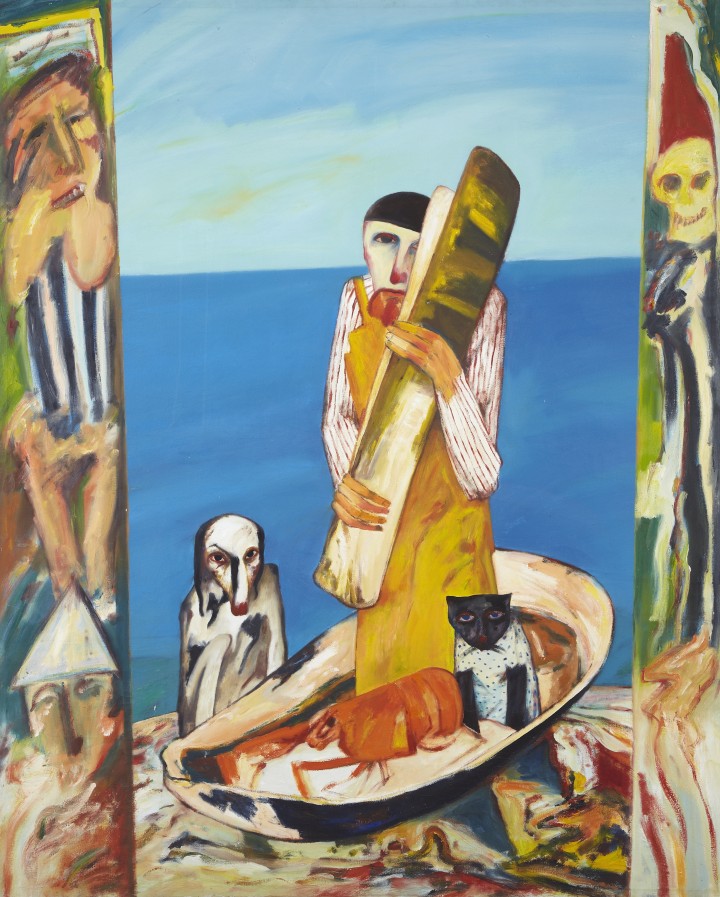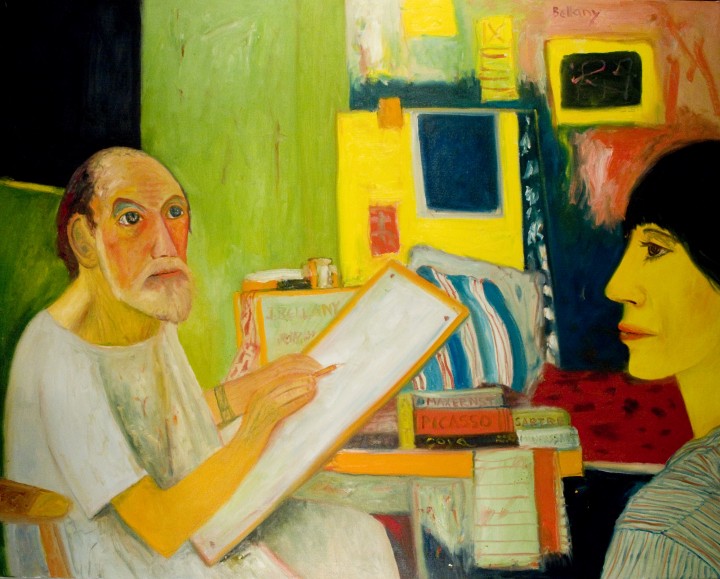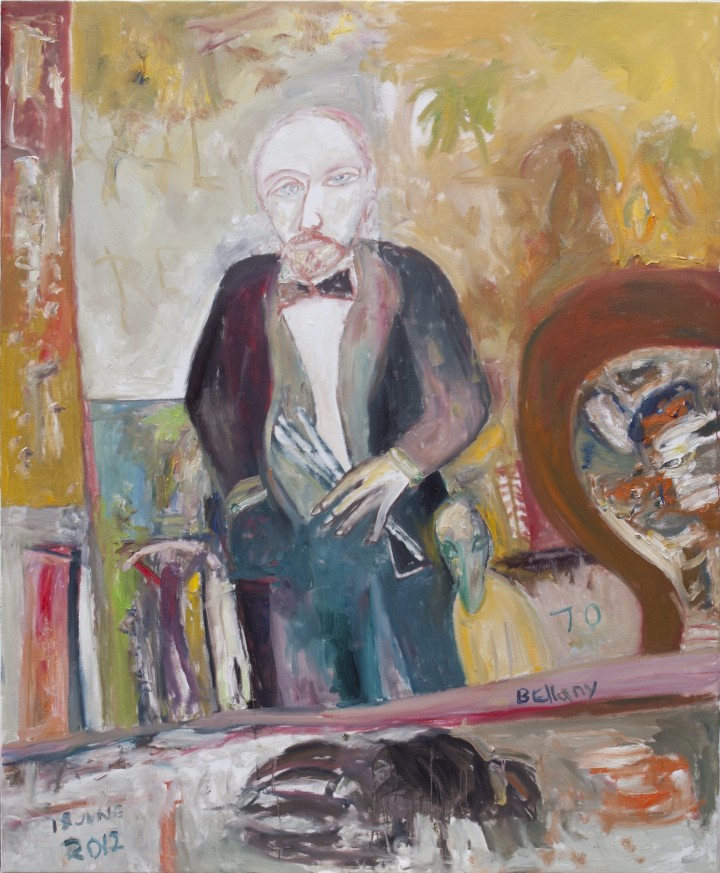Scottish Art News
Latest news
Magazine
News & Press
Publications
John Bellany: A Life in Self-Portraiture
By Lena Kammerer, 01.07.2025

With the exhibition, John Bellany: A Life in Self-Portraiture, the City Art Centre presents a compelling chronology of the life and work of Scottish artist John Bellany (1942-2013). Bellany’s celebrated self-portraits serve here as a powerful narrative device, charting his personal and artistic journey over five decades, from the early 1960s to his death in 2013.
Curated by Bill Hare and Sandy Moffat, the exhibition features over eighty autobiographical works comprising drawings, paintings, prints, and sketchbooks, with the breadth of media matching the richness and diversity of Bellany’s self- representation as he portrays himself in a multitude of various guises. The following five key portraits, selected from the wide range of exhibited works, offer glimpses into the different stages of Bellany’s career.
Bellany’s 1965 Self-Portrait stands as a figurative declaration of his self- awareness during his early years as an artist. Painted at the conclusion of his time at the Edinburgh College of Art, where he had enrolled five years prior, and upon his subsequent move to London to study at the Royal College of Art, this work is striking both in scale and spirit. At just twenty- three, Bellany, who was brought up with Calvinist teachings in a family of boatbuilders and fishermen in the coastal village of Port Seton near Edinburgh, depicts himself here as a self-assured young artist, paintbrushes in hand, clad in a white fisherman’s jumper and a vivid orange sheepskin waistcoat, towering confidently over the spectator with a Lilliputian harbour scene behind him. In this monumental self-image, Bellany merges the rugged world of his upbringing with the expansive artistic vision and identity he began to forge in Edinburgh.
 John Bellany, ''Self-Portrait with Razor Shell' (1976). City Art Centre, City of Edinburgh Museum and Galleries © The John Bellany Estate
John Bellany, ''Self-Portrait with Razor Shell' (1976). City Art Centre, City of Edinburgh Museum and Galleries © The John Bellany Estate
'Self-Portrait with Razor Shell' (1976) is indicative of Bellany’s shift toward a more expressionist style, while remaining committed to the iconography of his North Sea roots. By then, Bellany had made London his home, taking up teaching positions at surrounding art schools. However, the capital’s art scene at the time was not especially receptive towards his “resolutely Scottish” pictorial expressionism. In 'Self-Portrait with Razor Shell', the artist appears isolated in a boat-like shell sitting on the edge of the sea, his pale, mask-like face emerging from behind a giant razor shell. He is surrounded by unsettling figures: a red lobster, a black cat, and a crouching dog. The flanking panels show ghostly figures and a grinning skull. Universal themes of guilt and death, recurring remnants of his Calvinist upbringing, are combined with elements of myth and superstition. His nightmarish dream worlds lurk in the margins of the painting, alluding towards Bellany’s increasing personal turmoil during this period.
.jpg) John Bellany, 'Prometheus III', (1988). © The John Bellany Estate
John Bellany, 'Prometheus III', (1988). © The John Bellany Estate
The mid-1980s marked an abrupt end to Bellany’s “wild phase,” as his health deteriorated rapidly due to his self-destructive and excessive drinking habits. In 1988, the year he underwent a life-saving liver transplant, he created 'Prometheus III', a monumental and deeply personal work from a series based on the Prometheus legend. Painted at this pivotal juncture in his life, the piece confronts mortality and sin through the use of mythological symbolism. Bellany identifies himself with Prometheus, the rebellious Titan punished by Zeus for giving fire to humanity. With Prometheus’s liver endlessly devoured by an eagle as punishment, Bellany stages his symbolic self-punishment by inserting himself as a Janus-faced self into the myth. 'Prometheus III' becomes a mythic confession and a surrogate self-portrait, offering an intimate meditation on suffering and survival. It stands as a powerful testament to recovery and the possibility of redemption, capturing an artist on the brink of death who has been granted a new lease of life.
 John Bellany, 'Self-Portrait drawing a Nurse, Addenbrookes Hospital', (2008). © The John Bellany Estate
John Bellany, 'Self-Portrait drawing a Nurse, Addenbrookes Hospital', (2008). © The John Bellany Estate
After his successful surgery and subsequent recovery, the focus of Bellany's life and work shifted, and his paintings are said to have taken on a more hopeful tone. Although the exhibition includes comparatively few of Bellany's self-portraits from the 1990s and 2000s, 'Self-Portrait drawing as a Nurse - Addenbookes Hospital' (2008) offers a glimpse into the work of this artist who had so narrowly avoided death and been given another chance at life. This painting is not only representative of the many self-portraits Bellany created of himself in various hospital settings, with Addenbrookes Hospital in Cambridge having been the site of his liver transplant, but it also markedly contrasts with the mood of his earlier portraits while still presenting himself as the artist at the centre. Despite being dressed in a patient's gown, Bellany depicts himself at work, dutifully painting his model, staying faithful to what he wrote shortly after recovering from his operation: “Live for art – art is life”.
 John Bellany, 'Bellany at 70', (2012). © The John Bellany Estate
John Bellany, 'Bellany at 70', (2012). © The John Bellany Estate
'Bellany at 70' (2012) is one of the artist’s final self-portraits, painted on his seventieth birthday, despite his then-deteriorating eyesight. Continuing his tradition of birthday self-portraits, Bellany presents himself here in an evening suit and bow tie, pale-faced and blue-eyed, and with a bundle of brushes in one hand. The composition feels open, replete with bright and luminous colours that echo the increasingly optimistic tone of his later work. During the final decade of his life, Bellany primarily lived and worked in a house he bought in the Tuscan village of Barga while finally enjoying increasing widespread critical acclaim for his work. The portrait exudes a calmness that has been stripped of the earlier, sometimes nightmarish meditations on death, guilt, original sin and redemption, offering a calmer assessment of mortality that shows a deep appreciation for life. Rather than the romanticised heroism seen in his 1965 self-portrait, it conveys vulnerability, albeit not while lacking confidence, by honestly showcasing his human frailty.




